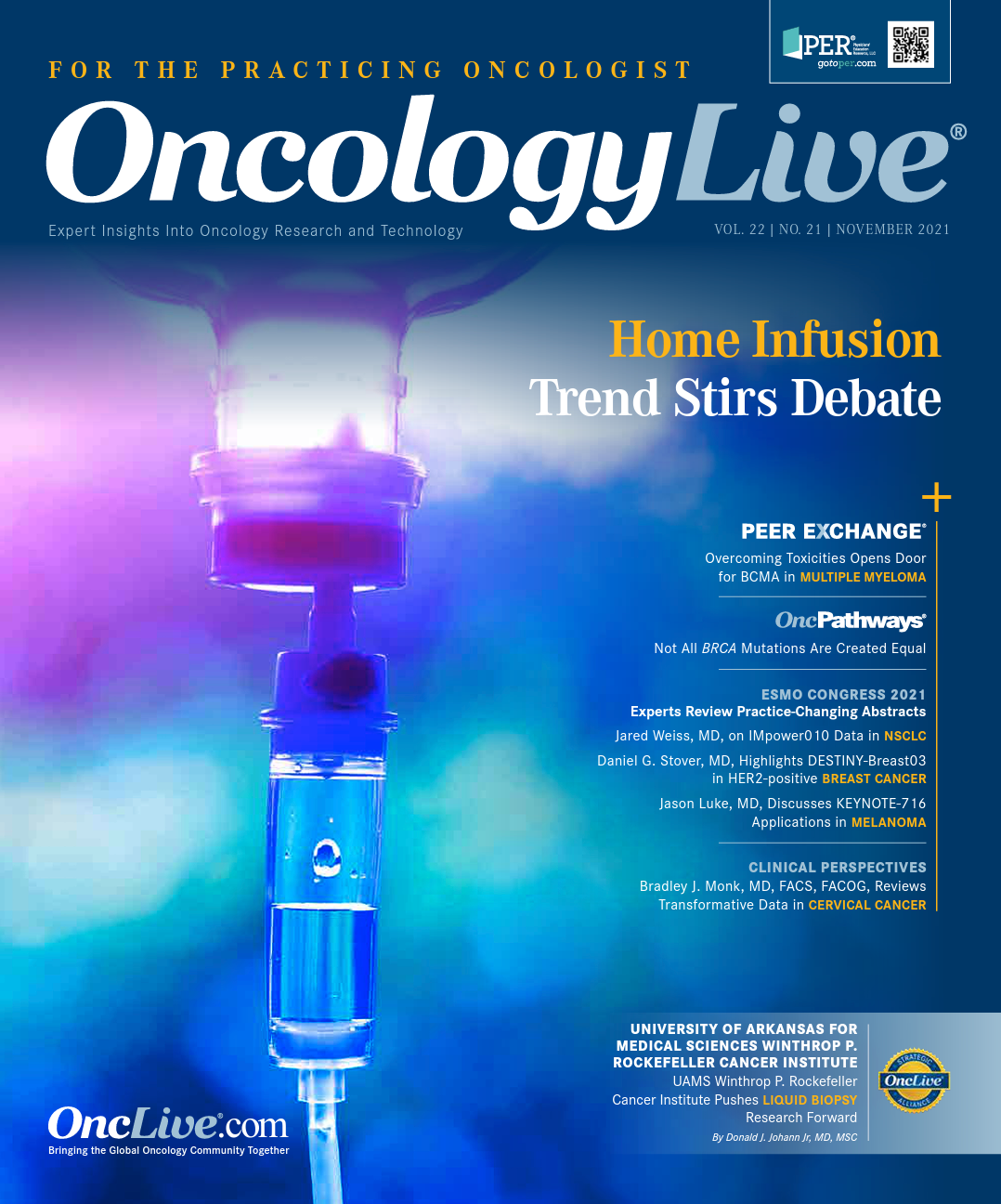Publication
Article
Oncology Live®
Beyond the Peer-Review Publication: Addressing Implications of Research for Patients
Author(s):
Maurie Markman, MD, discusses the need for peer-reviewed publications to encourage further discussion and debate, challenge existing ideas or dogma, or provide support for current biological concepts or in the clinical realm for treatment of patients.
Maurie Markman, MD

The coin of the realm in the academic sector of oncology is the peer-reviewed publication. Authors understandably favor that their efforts be published in medical and oncology journals with the strongest objectively measured profiles, which are determined by proprietary algorithms created by various organizations.
Unfortunately, what is quantified in terms of the impact of a journal or individual article is the number of citations generated over a specified period in other peer-reviewed publications. In the opinion of this commentator, the actual focus of these efforts is to acknowledge the influence of the article or journal on other authors and investigators, rather than on the patients who may be the topic of the publication.
A related and concerning issue with regard to individual journal articles is what happens after the manuscript is published. Does the article do more than simply become a component of the résumé of the paper’s several authors, never to be seriously discussed again, or do the reported results serve as a stimulus for future investigation? Of course, industry would have a proprietary interest in published follow-up results of investigative efforts they commissioned or run, but what about publications that do not have an external sponsor willing or able to use the published results to directly affect patient care?
A provocative commentary by Naomi Oreskes in Scientific American discussed the question of the nature of science.1 “Science is a process of learning and discovery, and sometimes we learn that what we thought was right is wrong,” Oreskes wrote.
To explore the concept being highlighted in this commentary, I have selected 5 articles from a single issue of the journal Gynecologic Oncology (volume 162; July 2021), with the intention to review the potential implications for future research in the treatment of patients with gynecologic malignancies.
Investigators of the first article retrospectively examined 562 patients who underwent neoadjuvant chemotherapy at The University of Texas MD Anderson Cancer Center in Houston for advanced-stage ovarian cancer and identified factors that might predict success in subsequent interval cytoreductive surgery.2 Two factors were highlighted: presence of a germline BRCA mutation and administration of dose-dense paclitaxel chemotherapy, both of which were predictive of improved opportunities for successful surgery and progression-free survival. The question to be asked in this commentary is what effect will these results have on future treatment plans of these investigators and others viewing the findings? Will the results change practice, lead to further research efforts including attempting to obtain confirmatory data from other large treatment datasets, or simply be forgotten/ignored?
The second paper reported the risk of platinum- associated hypersensitivity reactions among 409 patient with ovarian cancer, 95 (23%) of whom had a BRCA mutation.3 The investigators found a doubling (9% to 18%) in the risk of an allergic reaction among the patients with a BRCA mutation. The question to be asked here is what are the clinical or future research implications of this observation? Should patients with BRCA mutations be more carefully observed for such events, perhaps counseled regarding the risk, or should additional investigation be undertaken by other centers to confirm or refute these findings?
Investigators of the third paper retrospectively examined an institutional experience with the efficacy and toxicity of pembrolizumab (Keytruda) plus lenvatinib (Lenvima) for the treatment of recurrent endometrial cancer.4 Among 70 patients, the investigators found that a reduced starting dose of lenvatinib was associated with less-serious adverse effects and no difference in response rates. The authors noted that “a lower starting dose of lenvatinib (14 mg daily) in combination with pembrolizumab was safe and efficacious in recurrent endometrial cancer” but appropriately added that “larger studies are required to validate these findings.” Is that study going to be initiated, and how will investigators work to ensure that appropriate randomized, controlled trials are conducted to confirm or refute this potentially highly clinically relevant observation?
A fourth study examined the National Cancer Database for the effect of fragmentation of care—surgery and chemotherapy delivered at different institutions—for patients who receive a diagnosis of ovarian cancer.5 In a population of 36,300 patients, of whom 13,347 (36.8%) received such care, investigators found that fragmentation of care between primary surgery and subsequent chemotherapy did not have an adverse effect on long-term survival. How will these data be employed by an individual clinician when determining management options for an individual patient? For example, would they consider arranging for surgery to be undertaken in a high-volume center with multiple cycles of systemic treatment given nearer to the patient’s home?
Finally, investigators of a highly provocative study examined the effect of a substantial decrease in the use of minimally invasive hysterectomy for the treatment of cervical cancer in the United States.6 Investigators found that following the publication of landmark data that reported the risk associated with the minimally invasive approach, patients were 63% less likely to receive this surgical strategy. However, the retrospective analysis revealed the decreased use of minimally invasive surgery was associated with a greater risk of perioperative complications (23%). Therefore, the question to be asked here is how will this information be incorporated into future clinical trials in this arena or in the management of individual patients?
The information that appears in medical/scientific journals may add an important new component that can advance solutions to problems affecting patients, or it may be an observation of little relevance to anyone. But if the paper does not encourage further discussion and debate, challenge existing ideas or dogma, or provide support for current biological concepts or in the clinical realm for treatment of patients, what was its purpose?
References
- Oreskes N. If you say ‘science is right,’ you’re wrong. Scientific American. July 1, 2021. Accessed October 7, 2021. bit.ly/3AnK8MZ
- Fleming ND, Westin SN, Rauh-Hain JA, et al. Factors associated with response to neoadjuvant chemotherapy in advanced stage ovarian cancer. Gynecol Oncol. 2021;162(1):65-71. doi:10.1016/j.ygyno.2021.04.002
- Giannone G, Scotto G, Katsaros D, et al. Hypersensitivity to platinum salts according to BRCA status in ovarian cancer: a retrospective analysis of clinical outcomes and systematic review of literature. Gynecol Oncol. 2021;162(1):80-87. doi:10.1016/j.ygyno.2021.04.018
- How JA, Patel S, Fellman B, et al. Toxicity and efficacy of the combination of pembrolizumab with recom-mended or reduced starting doses of lenvatinib for treatment of recurrent endometrial cancer. Gynecol Oncol. 2021;162(1):24-31. doi:10.1016/j.ygyno.2021.04.034
- Cham S, Huang Y, Melamed A, et al. Fragmentation of surgery and chemotherapy in the initial phase of ovarian cancer care and its association with overall survival. Gynecol Oncol. 2021;162(1):56-64. doi:10.1016/j.ygyno.2021.04.032
- Matsuo K, Mandelbaum RS, Klar M, et al. Decreasing utilization of minimally invasive hysterectomy for cer-vical cancer in the United States. Gynecol Oncol. 2021;162(1):43-49. doi:10.1016/j.ygyno.2021.05.005























%20(2)%201-Recovered-Recovered-Recovered-Recovered-Recovered-Recovered-Recovered-Recovered-Recovered-Recovered-Recovered-Recovered-Recovered-Recovered-Recovered-Recovered-Recovered.jpg?fit=crop&auto=format)
%20(2)%201-Recovered-Recovered-Recovered-Recovered-Recovered-Recovered-Recovered-Recovered-Recovered-Recovered-Recovered-Recovered-Recovered-Recovered-Recovered-Recovered-Recovered.jpg?fit=crop&auto=format)
